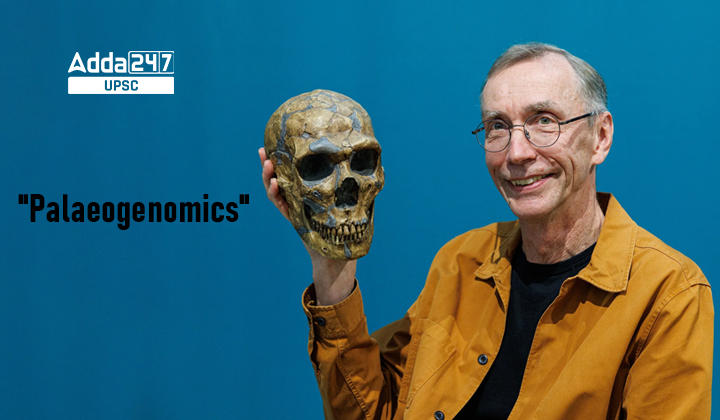Table of Contents
Relevance For UPSC
GS 3: Scientific Innovations & Discoveries
Why in news?
The Nobel Prize for Physiology this year has been awarded to Svante Paabo, a Swedish geneticist, who pioneered the field of palaeogenomics, or the study of ancient hominins by extracting their DNA.
How can DNA be extracted from fossils?
- The challenge with extracting DNA from fossils is that it degrades fairly quickly and there is little usable material. Because such bones may have passed through several hands, the chances of it being contaminated by human as well as other bacterial DNA get higher.
- This has been one of the major stumbling blocks to analysing DNA from fossils. One of Pääbo’s early forays was extracting DNA from a 2,500-year-old Egyptian mummy and while it caused a stir and helped his career, much later in life he said that the mummy-DNA was likely contaminated.
-
Concentration of DNA
- DNA is concentrated in two different compartments within the cell: the nucleus and mitochondria, the latter being the powerhouse of the cell.
- Nuclear DNA stores most of the genetic information, while the much smaller mitochondrial genome is present in thousands of copies and therefore more retrievable.
-
What significant Paabo did?
- In 1990, Pääbo, as a newly appointed Professor at the University of Munich, took the call to analyse DNA from Neanderthal mitochondria.
- With his techniques, Pääbo managed to sequence a region of mitochondrial DNA from a 40,000-year-old piece of bone.
- This was the first time a genome from an extinct human relative was pieced together.
- Subsequently, he managed to extract enough nuclear DNA from Neanderthal bones to publish the first Neanderthal genome sequence in 2010.
- This was significant considering that the first complete human genome was published only in 2003.
What has Paabo’s work shown?
- Pääbo’s most important contribution is demonstrating that ancient DNA can be reliably extracted, analysed and compared with that of other humans and primates to examine what parts of our DNA make one distinctly human or Neanderthal.
- Thanks to his work we know that Europeans and Asians carry anywhere between 1%-4% of Neanderthal DNA and there is almost no Neanderthal DNA in those of purely African ancestry.
- Comparative analyses with the human genome demonstrated that the most recent common ancestor of Neanderthals and Homo sapiens lived around 8,00,000 years ago.
- In 2008, a 40,000 year-old fragment from a finger-bone, sourced from a Siberian cave in a region called Denisova, yielded DNA that, analysis from Pääbo’s lab revealed, was from an entirely new species of hominin called Denisova. This was the first time that a new species had been discovered based on DNA analysis.
- Further analysis showed that they too had interbred with humans and that 6% of human genomes in parts of South East Asia are of Denisovan ancestry.
What are the implications of palaeogenomics?
- The study of ancient DNA provides an independent way to test theories of evolution and the relatedness of population groups. In 2018, an analysis of DNA extracted from skeletons at Haryana’s Rakhigarhi — reported to be a prominent Indus Valley civilisation site — provoked an old debate about the indigenousness of ancient Indian population.
- These fossils, about 4,500 years old, have better preserved DNA than those analysed in Pääbo’s labs as they are about 10-times younger.
- The Rakhigarhi fossils showed that these Harappan denizens lacked ancestry from Central Asians or Iranian Farmers and stoked a debate on whether this proved or disproved ‘Aryan migration.’
- Palaeogenomics also gives clues into disease. Researchers have analysed dental fossils to glean insights on dental infections.
- Genome-wide association studies, where segments of DNA from species are compared, have found that Neanderthal DNA may be linked with autoimmune diseases, type 2 diabetes, and prostate cancer.
- A study co-authored by Svante Pääbo and Hugo Zeberg linked an increased risk of severe respiratory failure following COVID-19 with a set of genes that are inherited from Neanderthals and is present in 50% of South Asians and 16% of Europeans.
- The presence of Neanderthal and Denisovan DNA in people also raised questions on whether there are hard genetic distinctions between people and their extinct evolutionary cousins.



 TSPSC Group 1 Question Paper 2024, Downl...
TSPSC Group 1 Question Paper 2024, Downl...
 TSPSC Group 1 Answer key 2024 Out, Downl...
TSPSC Group 1 Answer key 2024 Out, Downl...
 UPSC Prelims 2024 Question Paper, Downlo...
UPSC Prelims 2024 Question Paper, Downlo...
